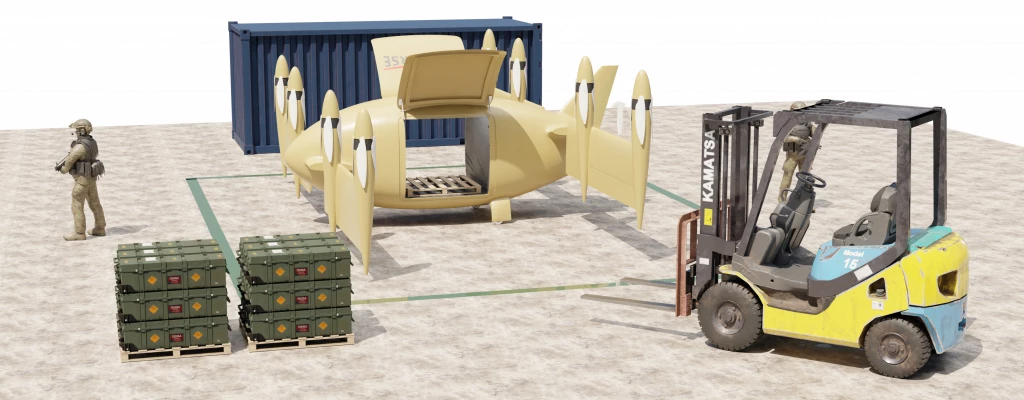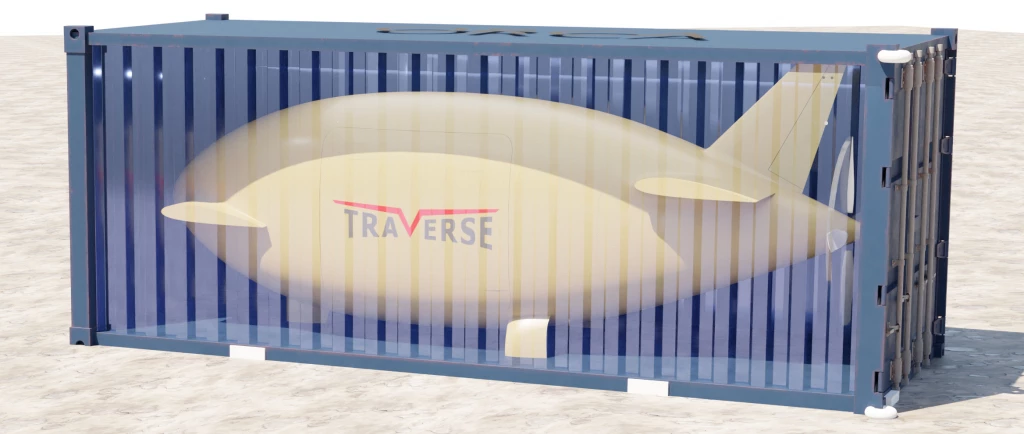In order for cargo drones to be widely adopted, it helps if they're compatible with the existing shipping infrastructure. The creators of the Orca drone have kept this fact in mind, as their aircraft is designed to accommodate payloads stacked on standard-size shipping pallets.
Currently being developed by the California-based Traverse Aero Corporation, the Orca is intended primarily for military use. That said, the company recently signed a letter of intent with civilian firm Ghenus Air for the purchase of 20 of the drones.
The Orca will be a hybrid-drive eVTOL (electric vertical takeoff and landing) aircraft, which uses an aviation-fuel engine to generate the electricity that powers the motors of its nine propellers. Eight of those props are on the wings, while the other one serves as a pusher propeller in the rear.

The wings will be angled vertically for takeoff and landing (putting their props in a helicopter-like orientation), then swivel into a horizontal configuration for faster, more efficient forward flight. And while things are still a bit up in the air at this point – no pun intended – the aircraft should have a cruising speed of 150 mph (241 km/h) and a hybrid range of 600 miles (966 km).
It will be able to autonomously follow a preprogrammed flight path, or be remotely controlled with assistance from an AI "co-pilot." In fact, a swarm of multiple Orcas could be simultaneously controlled in this manner.
As mentioned, the drone's big selling feature is the fact that it will accept loads on standard-size shipping pallets. Up to 550 lb (250 kg) of ammunition, supplies, etc will be loaded and unloaded through the Orca's two gull-wing doors, into a cargo compartment with a volume of 60 cubic feet (1.7 cubic meters).

And as an added bonus, the Orca will be small enough to fit in a regular 20-ft (6-m) shipping container (with its wings detached) while being transported to its point of deployment. A crew of two people should be able to unload the drone and have it operational within 30 minutes.
Finally, along with its use as a cargo-hauler, the Orca could conceivably also be used to evacuate casualties (from battle fields or disaster sites), perform reconnaissance, or even serve as a mobile launching platform for smaller drones.
Source: Traverse Aero Corporation





